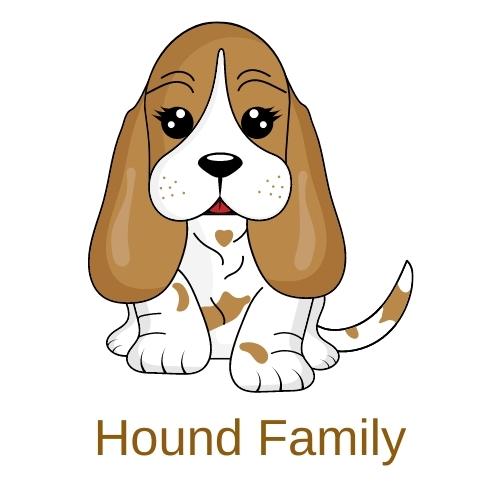![]()
Introduction to Beagle Puppy Growth
Welcome to our comprehensive guide on Beagle puppy growth. This guide is designed to help you understand the growth stages of your Beagle puppy and why it’s important to track their growth. Whether you’re a first-time Beagle owner or a seasoned pro, this information is crucial to ensure your puppy’s healthy development.
- Understanding the Importance of Tracking Beagle Puppy Growth
- Overview of the Beagle Growth Stages
- Newborn Stage (0-2 weeks): Beagle puppies are born blind, deaf, and completely dependent on their mother.
- Infant Stage (2-4 weeks): Puppies begin to open their eyes and ears, and start to explore their surroundings.
- Socialization Stage (4-12 weeks): This is a critical time for puppies to interact with people and other dogs to learn important social skills.
- Juvenile Stage (3-6 months): Puppies start to lose their baby teeth and their adult teeth begin to grow in. They also start to show more independence.
- Adolescent Stage (6-18 months): Beagles reach their sexual maturity and can start to test boundaries as they navigate this stage.
- Adult Stage (18 months+): Beagles are considered adults, although they may still display puppy-like behavior.
Tracking your Beagle puppy’s growth is more than just a fun way to document their journey from puppyhood to adulthood. It’s a vital part of ensuring they’re developing at a healthy rate. By keeping an eye on their growth, you can spot any potential health issues early on. For example, if your puppy is growing too quickly or too slowly, it could be a sign of a nutritional deficiency or a health problem. Regular vet check-ups and keeping a growth chart can help you stay on top of your puppy’s health.
Beagle puppies go through several distinct growth stages, each with its own milestones and developmental changes. Here’s a quick overview:
Each of these stages is a unique and exciting part of your Beagle puppy’s life. By understanding what to expect, you can provide the best care and support for your growing pup.
Understanding Beagle Growth Stages
Just like humans, Beagles go through different stages of growth. Each stage is unique and comes with its own set of changes. Understanding these stages can help you provide the best care for your Beagle puppy. Let’s delve into the different stages of Beagle puppy development.
Beagle Puppy Development
- Birth to 2 weeks: This is the neonatal period. Beagle puppies are born blind, deaf, and toothless. They rely entirely on their mother for warmth and food. During this stage, they spend most of their time sleeping and eating. Their weight can double in just one week!
- 2 weeks to 8 weeks: This is the transition period. Puppies start to open their eyes and ears, and their teeth begin to appear. They start to explore their surroundings and learn to walk. By the end of this stage, they are ready to leave their mother and join their new families.
- 8 weeks to 6 months: This is the socialization period. Beagle puppies are very curious and eager to learn during this stage. They start to interact more with their human family and other pets. This is a crucial time for training and socialization. Puppies will also go through a growth spurt, so proper nutrition is important.
- 6 months to 1 year: This is the juvenile period. Beagle puppies continue to grow and develop, both physically and mentally. They are full of energy and need plenty of exercise. They will also start to show their adult personality. By the end of this stage, most Beagles will have reached their full adult size.
Understanding these growth stages can help you provide the best care for your Beagle puppy. Remember, every Beagle is unique and may develop at a slightly different pace. The most important thing is to provide plenty of love, care, and patience during each stage of their growth.
Beagle Growth Chart
Understanding your Beagle’s growth chart can be a great way to monitor their health and development. This chart outlines the average weight and height of a Beagle at different stages of their life, from puppyhood to adulthood.
Interpreting the Beagle Size Chart
Reading a Beagle size chart might seem complicated at first, but it’s actually quite simple once you know what to look for. Let’s break it down into two main parts.
- How to read a Beagle Growth Chart
- Understanding the Beagle Growth Rate
A Beagle growth chart usually has age on the x-axis (horizontal line) and weight or height on the y-axis (vertical line). As your Beagle ages, you can track their weight and height along these lines. For example, if your Beagle is 6 months old, you would find the 6-month mark on the x-axis and look up to see their expected weight and height on the y-axis. Keep in mind that these charts provide averages, and individual Beagles may vary.
Beagles grow rapidly during their first few months, then their growth rate slows down as they approach adulthood. By understanding the growth rate, you can ensure your Beagle is growing at a healthy pace. A sudden change in growth rate could indicate a health issue and should be discussed with a vet. Remember, a steady growth rate is healthier than rapid growth, which can lead to health problems later in life.
Here’s an example of what a Beagle growth chart might look like:
| Age | Weight | Height |
|---|---|---|
| 3 Months | 9-12 lbs | 9-11 inches |
| 6 Months | 18-20 lbs | 12-13 inches |
| 1 Year | 20-25 lbs | 13-15 inches |
By understanding and monitoring your Beagle’s growth chart, you can ensure they are growing and developing healthily. Remember, every Beagle is unique and may not fit perfectly into these averages. Always consult with your vet if you have concerns about your Beagle’s growth.
When Does a Beagle Reach Full Size?
Understanding when a Beagle reaches its full size is crucial for every Beagle owner. This knowledge helps in planning for the right size of living space, diet, and exercise routine. Generally, a Beagle reaches its full size between 18 months and 2 years of age. However, this can vary depending on factors such as genetics, diet, and overall health.
Identifying a Full Grown Beagle
Identifying a full-grown Beagle can be done by observing physical characteristics and behavioral changes. Let’s delve into these indicators:
- Physical characteristics of an Adult Beagle Size
- Behavioral changes indicating Beagle Maturity Age
Adult Beagles typically weigh between 18 to 30 pounds and stand about 13 to 15 inches tall at the shoulder. Their bodies become more muscular and defined. The males are usually slightly larger than the females. Their coat also becomes denser and shinier. Remember, these are average figures and individual Beagles can vary.
As Beagles mature, their behavior changes. They become less hyperactive and their chewing habits decrease. Their attention span increases, making them more responsive to training. They also become more independent and territorial. However, they maintain their friendly and loving nature, which makes them great companions.
In conclusion, understanding when your Beagle reaches full size and how to identify it is important for their overall well-being. It allows you to provide the right care and environment for your furry friend. Remember, each Beagle is unique and may not strictly follow these general guidelines. Always consult with your vet for any concerns about your Beagle’s growth and development.
Beagle Puppy Growth Timeline
Understanding the growth timeline of a Beagle puppy can be a fascinating journey. It’s like watching a tiny seed grow into a beautiful flower, but in this case, the flower is your adorable Beagle puppy. Let’s explore the key milestones in a Beagle puppy’s development.
Key Milestones in Beagle Puppy Development
Beagle puppies go through several stages of development, each with its own unique characteristics and milestones. Here are some of the most important stages:
- First Week: Birth and Early Development
- One Month: Early Socialization and Exploration
- Three Months: Teething and Increased Activity
- Six Months: Adolescence and Training
- One Year: Transition to Adulthood
In the first week, Beagle puppies are tiny, blind, and completely dependent on their mother. They spend most of their time sleeping and eating. By the end of the week, they may double their birth weight.
At one month old, Beagle puppies begin to explore their surroundings. Their eyes are open, and they start to play with their siblings. This is a crucial time for socialization and learning about the world.
By three months, Beagle puppies are very active and playful. They start teething, which means they’ll chew on just about anything they can find. This is a good time to introduce chew toys and start basic training.
At six months, Beagle puppies enter adolescence. They may become more independent and stubborn, which can make training a challenge. Consistency and patience are key during this stage.
By one year, Beagle puppies have usually reached their full size and are considered adults. They should be fully trained and socialized by this point. However, they still have plenty of energy and love to play!
Remember, every Beagle puppy is unique and may develop at a slightly different pace. It’s important to provide plenty of love, care, and patience as your puppy grows and learns.
Conclusion: Tracking Your Beagle’s Growth
As we wrap up our discussion on Beagle growth, it’s important to highlight two key aspects that every Beagle owner should consider: the importance of regular vet check-ups and the benefits of understanding your Beagle’s growth and development.
- Importance of Regular Vet Check-ups
- Benefits of Understanding Your Beagle’s Growth and Development
Regular vet check-ups are essential in tracking your Beagle’s growth. These check-ups provide an opportunity for your vet to assess your Beagle’s overall health and development. Your vet will measure your Beagle’s weight and size, check their teeth and coat, and assess their overall physical condition. They can also provide valuable advice on feeding and exercise routines to ensure your Beagle is growing at a healthy rate. Remember, early detection of any potential health issues can make a significant difference in your Beagle’s life.
Understanding your Beagle’s growth and development is not just about knowing when they will reach their full size. It’s about understanding their physical changes and behavioral development at each stage of their life. This knowledge can help you provide the right care, nutrition, and training that your Beagle needs at each stage. It can also help you identify any unusual changes in their growth or behavior, which could be signs of health issues. In essence, understanding your Beagle’s growth and development can help you ensure they live a healthy and happy life.
In conclusion, tracking your Beagle’s growth is a responsibility that comes with being a Beagle owner. It requires regular vet check-ups and a good understanding of your Beagle’s growth and development. By doing so, you can ensure your Beagle grows into a healthy and well-adjusted adult dog.







